What is a Manual Water Pump?
A manual water pump is a hand-operated device designed to remove water from boats, ensuring marine safety through reliable, non-electric operation in emergencies and rural settings.
A manual water pump is a device that uses human effort to extract water from a source, such as a well, tank, or body of water. It operates by converting mechanical energy from a handle or lever into suction, which draws water up through a pipe or hose. Unlike electric pumps, manual pumps rely solely on physical force, making them simple, eco-friendly, and independent of external power sources. They are often used in remote or off-grid locations where electricity is unavailable, providing a reliable and cost-effective solution for water extraction.
Importance of Manual Water Pumps
Manual water pumps are essential for reliable water extraction in various settings, especially where electricity is unavailable. They provide a sustainable solution for accessing water in remote or off-grid areas, ensuring independence from power sources. Their simplicity and durability make them cost-effective and low-maintenance, while their eco-friendly design minimizes environmental impact. Additionally, they serve as critical tools in emergency situations, such as floods or power outages, where water removal is urgent. Their versatility and practicality make them indispensable for both everyday use and crisis management.
Key Characteristics of Manual Water Pumps
Manual water pumps are portable, simple, and hand-operated, requiring no electricity. They are durable, reliable, and designed for easy maintenance, making them ideal for various applications.
Hand-Operated Mechanism
A manual water pump requires a hand-operated mechanism, such as a handle or lever, to create suction and force water through the system. The mechanism must be durable, ensuring consistent performance over time. It should also be easy to operate, with an ergonomic design to reduce user fatigue. The pump’s efficiency depends on the user’s ability to maintain a steady, rhythmic motion. This mechanism is essential for reliability, especially in scenarios without access to electricity. Regular lubrication and maintenance of moving parts are critical to sustain optimal functionality.
Portability and Simplicity
A manual water pump must be lightweight and compact for easy transportation, making it ideal for remote or off-grid locations. Its design should prioritize simplicity, with minimal components to ensure ease of use and maintenance. The pump should operate without complex instructions, allowing anyone to use it effectively. Portability enhances versatility, enabling quick relocation as needed. A simple, intuitive design ensures reliability, even in challenging environments, while reducing the risk of mechanical failures. This makes manual pumps a practical choice for various applications requiring straightforward water extraction solutions.
Reliability in Emergency Situations
A manual water pump must demonstrate consistent performance during emergencies, ensuring water can be extracted quickly and efficiently. It should operate reliably without electricity, making it a vital tool in power-outage scenarios. The pump’s mechanism must withstand harsh conditions and provide a fast response time to prevent water accumulation. Durable construction and minimal maintenance requirements are essential for dependable operation in critical situations. Its ability to deliver steady water flow ensures it can handle emergency drainage needs effectively, making it a trustworthy solution for urgent water management scenarios.
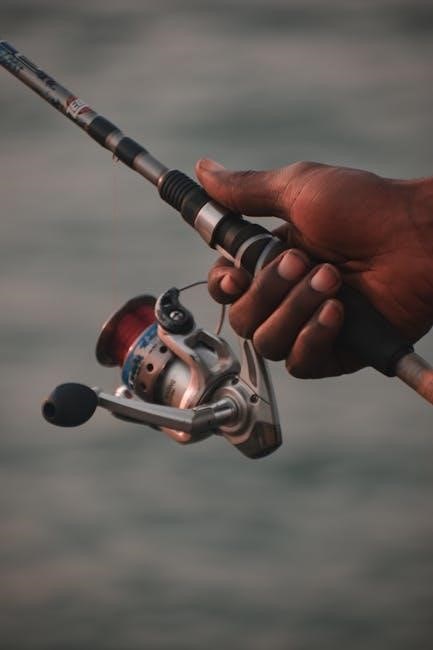
Regulations and Requirements
Manual water pumps must meet specific regulations, ensuring compliance with safety standards and design specifications. They undergo rigorous testing to guarantee performance and reliability in various applications.
Canadian Small Vessel Regulations
Canadian Small Vessel Regulations require manual water pumps to meet specific safety and performance standards. They must have a minimum flow rate of 24 liters per minute and be constructed from durable, corrosion-resistant materials. These pumps must also pass rigorous testing for reliability in emergency situations. Compliance ensures that manual water pumps can effectively handle bilge water and maintain vessel safety. Transport Canada enforces these regulations to prevent accidents and environmental damage, making them essential for all small vessels operating in Canadian waters.
Transport Canada Requirements
Transport Canada mandates that manual water pumps on small vessels must meet rigorous safety and efficiency standards. They require a minimum flow rate of 24 liters per minute and must be constructed from durable, marine-grade materials. Pumps must also pass stringent testing for reliability under various conditions, including submersion and high pressure. Compliance with these requirements ensures the pump can effectively manage bilge water and maintain vessel safety. Certification from a recognized body is often necessary to validate adherence to these standards.
International Maritime Regulations
International maritime regulations require manual water pumps to meet strict safety and performance standards for vessels. The International Maritime Organization (IMO) mandates pumps must deliver a minimum flow rate of 24 liters per minute and be constructed from corrosion-resistant materials. They must also pass rigorous testing for reliability in extreme conditions. Certification from recognized bodies like Lloyd’s Register or DNV GL is essential. These regulations ensure pumps can effectively manage bilge water and maintain vessel safety globally, aligning with international maritime safety protocols.
Functional Requirements
Manual water pumps must efficiently remove water, handle various sources, and operate reliably in emergencies. They should ensure consistent performance, durability, and ease of use in diverse conditions.
Efficient Water Removal
Manual water pumps must ensure efficient water removal, maintaining consistent flow rates even in low-water conditions. They should minimize effort while maximizing output, reducing fatigue during operation. Efficient pumps often feature optimized suction lift and discharge capabilities, ensuring quick water extraction. Design elements like valve placement and cylinder size play a crucial role in enhancing efficiency. Additionally, smooth piston action and seal quality prevent water backflow, ensuring reliable performance. Efficient water removal is critical for both emergency and everyday use, making it a key functional requirement for manual water pumps.
Capability to Handle Different Water Sources
Manual water pumps must be capable of handling various water sources, including freshwater, saltwater, and even contaminated water. They should withstand corrosion and abrasion from debris. Pumps designed for versatility often feature durable materials like stainless steel or PVC. Additionally, they may include filtration systems to manage impurities. This adaptability ensures reliable operation in diverse environments, from marine settings to rural areas. The ability to handle different water sources enhances their utility and makes them suitable for a wide range of applications, ensuring consistent performance regardless of the water quality or source.
Manual water pumps must be dependable in emergency situations, such as floods or power outages, where electric pumps fail. They require minimal maintenance and should operate consistently under stress. Durable materials and a simple design ensure longevity and ease of use. Quick activation and consistent water flow are critical to prevent water accumulation. Reliability also depends on resistance to corrosion and ability to handle contaminated water. These pumps are essential for emergency preparedness, providing a trustworthy solution when other systems fail.
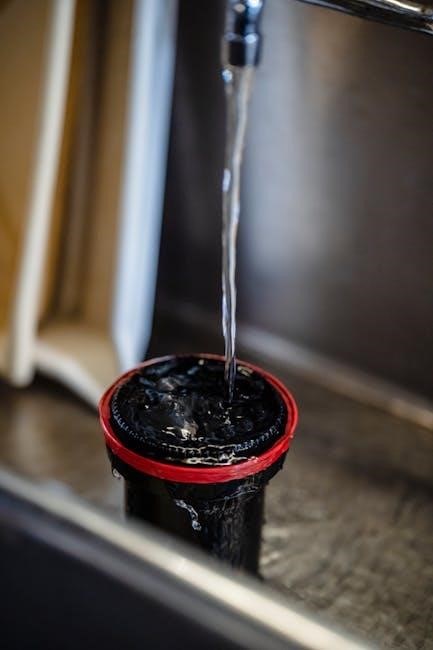
Technical Specifications
Manual water pumps must meet specific technical specifications, including flow rate, suction lift capacity, and durability. These ensure efficient performance and longevity in various applications.
Flow Rate Requirements
Manual water pumps must have a sufficient flow rate to effectively remove water in various scenarios. The flow rate, measured in liters per minute (L/min) or gallons per minute (GPM), depends on the application. For small boats or emergency use, a flow rate of 5-10 L/min is often adequate, while larger vessels may require higher capacities. The pump’s design, including cylinder size and piston stroke, directly impacts flow rate efficiency. Ensuring the pump meets the required flow rate for its intended use is critical for reliable performance in emergencies or daily operations.
Suction Lift Capacity
Manual water pumps must meet specific suction lift requirements to effectively draw water from a lower level. The suction lift capacity, typically measured in meters or feet, determines how high the pump can lift water from the source. A minimum capacity of 3-9 meters is often required, depending on the application. Proper pump design, including valve and cylinder size, ensures optimal suction lift. This feature is crucial for applications like boating or well-water extraction, where the water source is below the pump’s location. Ensuring adequate suction lift guarantees reliable operation in diverse environments.
Durability and Material Quality
Durability and material quality are critical for manual water pumps to ensure long-term performance. Pumps must be constructed from corrosion-resistant materials like stainless steel or high-quality plastics to withstand harsh environments. Marine-grade materials are essential for seawater applications. Durable pumps should also feature robust handles and tight seals to prevent leaks. Regular maintenance access is necessary for inspection and part replacement. While high-quality materials may increase initial costs, they provide long-term savings by reducing repair and replacement needs. Durable pumps ensure reliable operation in challenging conditions.

Installation and Setup
Secure placement, easy access, and proper alignment with existing systems are essential for efficient operation. Ensure the pump is installed on a stable surface.
Recommended Placement
Manual water pumps should be placed near the water source to minimize suction lift. Ensure the pump is installed on a stable, level surface for optimal performance. Position it in an easily accessible location to facilitate operation and maintenance. Protect the pump from direct sunlight, rain, or flooding to prevent damage. Keep the surrounding area clear of debris to ensure smooth operation. Proper placement enhances efficiency and extends lifespan, making it a critical factor in effective water management systems.
Accessibility Considerations
Manual water pumps should be installed in easily reachable locations to ensure accessibility for all users. Ideal placement allows operation from a comfortable standing or seated position, reducing physical strain. Clear pathways to the pump are essential, especially in emergency situations. Consider the needs of individuals with disabilities by ensuring controls are operable with minimal strength and dexterity. Proper accessibility enhances usability and safety, making the pump functional for a diverse range of users in various settings.
Integration with Existing Systems
Manual water pumps must be designed to integrate seamlessly with existing plumbing, storage, and drainage systems. Compatibility with standard connectors and fittings ensures easy installation without modifying infrastructure. The pump should align with the flow rate and pressure requirements of connected systems. Proper integration enhances functionality, ensuring efficient water transfer and minimizing potential disruptions; This adaptability makes manual water pumps a practical solution for diverse applications, from boats to off-grid homes.

Maintenance and Care
Regular inspection and cleaning of the pump are essential to prevent corrosion and wear. Lubrication of moving parts ensures smooth operation. Proper storage during off-seasons is recommended to maintain functionality and longevity.
Routine Maintenance Tasks
Regular inspection of the pump’s components, such as valves and seals, ensures optimal performance. Cleaning out debris and sediment prevents clogging and extends lifespan. Lubricating moving parts reduces friction and corrosion. Checking for worn-out components and replacing them promptly avoids breakdowns. Periodically testing the pump under various conditions ensures reliability. Proper storage in a dry, protected area during off-seasons prevents rust and damage. Following the manufacturer’s maintenance schedule guarantees efficiency and longevity of the manual water pump.
Troubleshooting Common Issues
Common issues with manual water pumps include low flow rate, pump failure to start, and leaks. Check for blockages in hoses or valves, ensuring all connections are secure. Inspect for worn or damaged seals and replace them if necessary. If the pump is hard to operate, lubricate moving parts or adjust alignment. Regularly cleaning the pump and checking for corrosion can prevent malfunctions; Ensuring proper installation and following maintenance routines helps minimize issues, extending the pump’s lifespan and reliability in operation.

Safety Considerations
Ensure proper installation, follow usage guidelines, and inspect regularly to prevent accidents. Compliance with safety standards is essential to avoid mechanical failures and ensure reliable operation.
Emergency Preparedness
A manual water pump is crucial for emergency preparedness, ensuring water removal during power outages or natural disasters. It requires regular testing and maintenance to guarantee reliability. Proper storage in an accessible location is essential to ensure quick deployment. Users should be trained in its operation to avoid delays. The pump’s durability and portability make it a vital tool in emergency response situations, such as floods or fires. Regular inspection of seals and moving parts ensures it functions when needed most, providing peace of mind during crises.
Compliance with Safety Standards
Manual water pumps must comply with established safety standards to ensure safe and reliable operation. These standards, set by regulatory bodies like Transport Canada and international maritime organizations, cover design, materials, and performance. Pumps must be certified to meet criteria for flow rate, suction lift, and durability. Regular inspections and adherence to maintenance protocols are required to uphold safety compliance. Non-compliant pumps may pose risks, emphasizing the importance of selecting pumps that meet or exceed recognized safety standards for various applications, including marine and emergency use.

Accessories and Add-Ons
Manual water pumps often require specific hoses, connectors, and storage solutions to enhance functionality. Additional accessories may include customization options for improved efficiency and versatility in use.
Hoses and Connectors
Manual water pumps require durable, high-quality hoses and connectors to ensure efficient water transfer. Hoses must be resistant to abrasion, UV exposure, and water pressure. Connectors should be securely fitted to prevent leaks and maintain a tight seal. They must also be compatible with the pump’s design and material composition. Properly selected hoses and connectors enhance the pump’s performance, reliability, and longevity, ensuring safe and effective operation in various environments and conditions.
Storage Solutions
Manual water pumps require proper storage to maintain functionality and longevity. They should be kept in a dry, protected area away from direct sunlight and extreme temperatures. The pump and its components should be stored in a clean, secure container to prevent damage. Regularly drying the pump after use is essential to avoid rust or corrosion. Portable storage options, such as durable cases or bags, are ideal for easy transport and organization. Proper storage ensures the pump remains ready for use in emergencies or daily operations.
DIY Customization Options
Manual water pumps can be customized to enhance functionality and adaptability. Users can modify the pump by adding custom hoses or connectors for specific applications. DIY enthusiasts might install a pressure gauge to monitor performance or add a foot-operated mechanism for hands-free use. Some opt to attach anti-siphon valves or check valves for better control. Additionally, custom mounts or handles can improve portability. These modifications allow users to tailor the pump to their unique needs, ensuring optimal performance in various settings while maintaining reliability and efficiency.
Applications of Manual Water Pumps
Manual water pumps are essential for boating, rural settings, and emergencies. They effectively drain water, irrigate fields, and supply water in off-grid areas, ensuring versatility and reliability.
Boating and Marine Use
Manual water pumps are crucial for marine applications, ensuring efficient bilge water removal and irrigation. They reliably operate without electricity, making them ideal for emergency drainage. Durable, corrosion-resistant materials and high flow rates are essential for marine use, ensuring longevity and performance in harsh environments. Regular maintenance is necessary to prevent clogging and extend lifespan, while compliance with maritime regulations guarantees safety and effectiveness in boating and marine settings.
Rural and Off-Grid Settings
Manual water pumps are essential in rural and off-grid areas where electricity is scarce. They provide reliable access to water for irrigation, livestock, and household needs. These pumps must be durable, capable of withstanding outdoor conditions, and easy to maintain. Portability is key, allowing use in multiple locations. They should handle various water sources, such as wells or ponds. Simple operation and low maintenance make them ideal for remote communities, ensuring consistent water supply without reliance on power grids.
Emergency Response Situations
Manual water pumps are crucial in emergency response situations, such as floods or power outages, where immediate water removal is vital. They must be reliable, quick to activate, and portable for use in diverse locations. The pump should operate efficiently under stress, with minimal setup. Durable construction ensures longevity in harsh conditions. Compliance with safety standards is essential to ensure performance and user safety. These pumps provide a lifeline during crises, making them indispensable in emergency preparedness kits and response strategies.
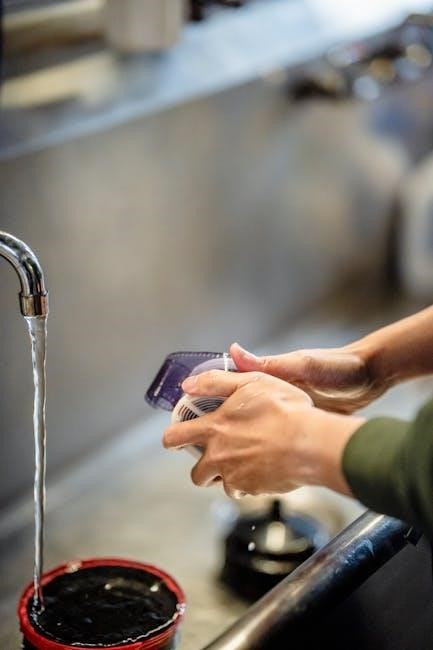
Environmental Impact
Manual water pumps require minimal energy, reducing carbon emissions. They promote eco-friendly water management without electricity, making them sustainable for long-term use and environmentally responsible solutions.
Energy Efficiency
Manual water pumps are energy-efficient as they rely on human effort rather than electricity. This eliminates the need for power consumption, reducing carbon emissions. They are environmentally friendly, as they do not contribute to energy waste. Their design ensures water is pumped effectively with minimal effort, making them sustainable for long-term use. This makes them ideal for eco-conscious users and areas with limited power access, promoting a greener approach to water management while maintaining functionality and reliability.
Eco-Friendly Design
Manual water pumps are designed with eco-friendly materials and principles, minimizing environmental impact. They often use non-toxic, durable materials like stainless steel or BPA-free plastics, ensuring safety for water sources and users. Their simplicity reduces waste and the need for hazardous chemicals in manufacturing. Additionally, they promote sustainable water management by conserving resources and eliminating reliance on fossil fuels. This eco-conscious design makes manual water pumps a responsible choice for environmentally aware users seeking reliable and green solutions for water handling needs.
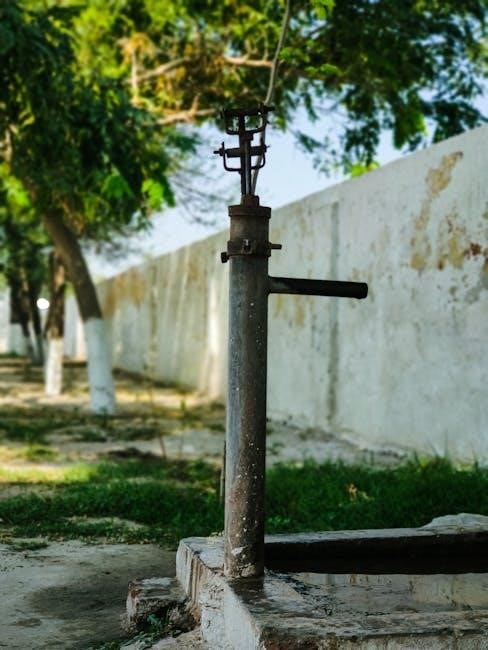
Cost Considerations
Manual water pumps are cost-effective, requiring minimal initial investment and low maintenance. Their durability ensures long-term savings, making them a practical choice for water management needs.
Initial Investment
The initial cost of a manual water pump is typically low, making it an affordable option for many users. Prices vary based on size, material, and brand, but basic models are often budget-friendly. Durable materials, such as stainless steel or high-quality plastics, may increase the upfront cost but provide longer lifespan. This accessibility makes manual pumps suitable for boating, rural settings, or emergency preparedness; While higher-end models offer advanced features, even entry-level pumps meet essential requirements for effective water management. This affordability ensures widespread applicability across various scenarios and user needs.
Long-Term Cost Savings
Manual water pumps offer significant long-term cost savings due to their durability and low maintenance requirements. With minimal moving parts, they are less prone to wear and tear, reducing repair and replacement costs. Their energy-efficient design eliminates reliance on electricity, lowering operational expenses. Additionally, manual pumps often have a longer lifespan compared to electric models, making them a cost-effective solution over time. This makes them a practical choice for boating, rural, and emergency applications where long-term reliability is crucial.
Manual water pumps are a reliable and efficient solution for water management, offering simplicity and versatility in various applications, making them a valuable investment for any setting.
A manual water pump requires a hand-operated mechanism, portability, and reliability in emergencies. It must efficiently remove water, handle various sources, and meet flow rate standards. Durability, suction lift capacity, and material quality are crucial for longevity. Compliance with regulations like Transport Canada and international maritime standards ensures safety and effectiveness. Proper installation, accessibility, and integration with existing systems are essential for functionality. Regular maintenance and troubleshooting ensure optimal performance, while eco-friendly designs and cost savings make manual pumps a practical choice for boating, rural, and emergency use.
Final Thoughts on Manual Water Pumps
Manual water pumps are versatile, reliable, and essential for various applications. Their portability, efficiency, and ability to function without electricity make them ideal for emergencies, boating, and off-grid settings. By meeting key requirements like flow rate and suction lift, they ensure effective water removal. Eco-friendly designs and low long-term costs add to their appeal. Whether for marine use or rural needs, manual pumps remain a practical and durable solution, offering peace of mind and consistent performance in critical situations.
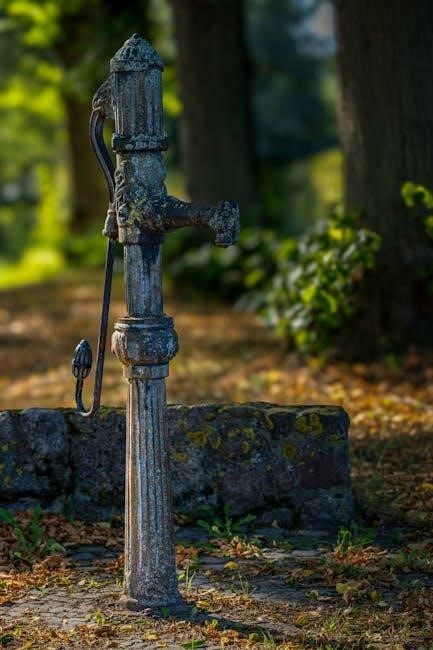
References
- Transport Canada Guidelines for Marine Safety Appliances.
- U.S. Coast Guard Requirements for Bilge Pumps.
- ISO Standards for Manual Pumps in Marine Applications.
Recommended Reading
For a deeper understanding of manual water pump requirements, explore these resources:
- Transport Canada’s Marine Safety Publications ― Covers compliance and safety standards for manual pumps on boats.
- U.S. Coast Guard Auxiliary Manuals ― Details bilge pump regulations and operational guidelines.
- ISO 15082:2001 ⎯ Specifies performance requirements for manual bilge pumps in marine applications.
These publications ensure adherence to safety and efficiency standards for manual water pumps.
Additional Resources
For further exploration, consider these resources:
- BoatUS Foundation ― Offers practical guides on manual water pump maintenance and selection.
- Reddit Boating Community ⎯ Discusses real-world applications and user experiences.
- Transport Canada ⎯ Provides detailed technical specifications and compliance guides.
These resources ensure a comprehensive understanding of manual water pump requirements and applications.
